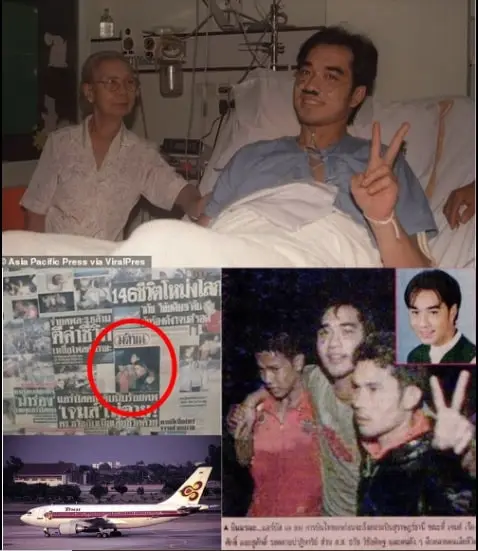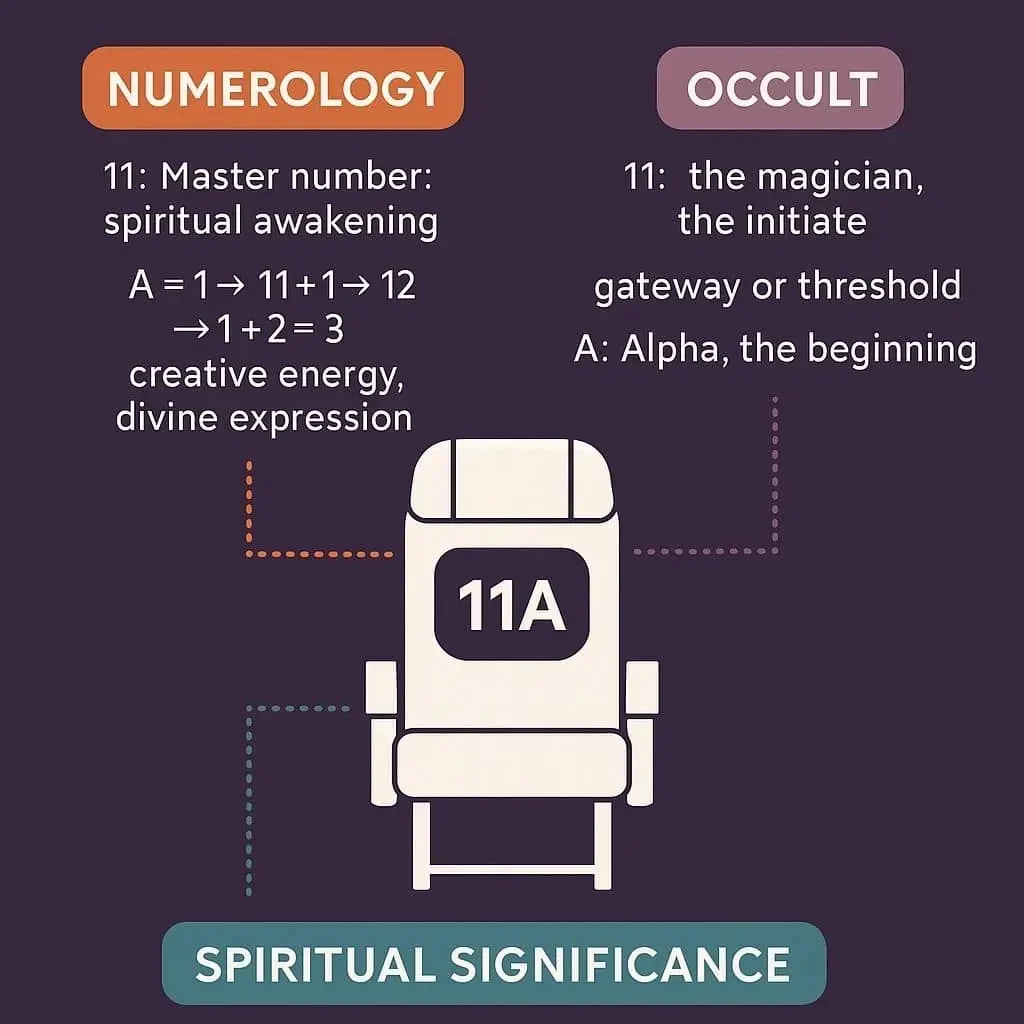🕓 Last Updated: June 18, 2025, 2:24 am (PH time)
Miracle Seat 11A—A Coincidence of Survival or a Seat of Destiny?
Seat 11A stuns the world as two lone survivors of separate plane crashes—Thai singer James Ruangsak in 1998 and Vishwash Kumar Ramesh in 2025—defy odds and walk away alive.
In the tragedy-riddled world of aviation disasters, stories of survival are few, and miracles, even fewer. But one seat, number 11A, is now being cast into the spotlight after not one, but two survivors of major plane crashes, 27 years apart, emerged from deadly wreckage virtually unscathed, each seated in 11A. How does it feel to you? I feel odd with a slight numbness right on this mark.
But would you rather ask, “What are the odds?” And more importantly, “Is this just a coincidence or a harrowing reminder of how fate can sometimes leave behind a strange breadcrumb trail of hope?” Silence deepens.
June 2025: The Ahmedabad Inferno
On June 12, 2025, Air India flight AI-171, a Boeing 787 Dreamliner, took off from Ahmedabad en route to London. Minutes later, it plunged into disaster, crashing into a residential area during an emergency return, triggering a firestorm that killed over 270 people, including dozens on the ground.
Yet from the fiery wreckage, one man walked away alive, calmly, phone in hand, stunned but breathing.

That man was Vishwash Kumar Ramesh, a 29-year-old tech consultant who had been assigned seat 11A next to an emergency exit. Witness video shows him limping slightly, shaken, but otherwise mobile and miraculously intact. Ramesh, the lone survivor, would later say, “All I remember was an explosion, a sharp jolt—and then light.” That was exactly what it was.
Meanwhile, experts believe his exit-row placement near a reinforced section of the fuselage may have given him just enough buffer to “escape” the catastrophic forces that consumed the rest of the aircraft.
December 1998: Thai Pop Star’s Miracle Escape
Strikingly similar is the story of James Ruangsak Loychusak, a young Thai actor and singer who was just beginning to rise to fame in the late 1990s.
On December 11, 1998, Thai Airways Flight TG261 crashed while attempting to land in heavy rain at Surat Thani airport. The Airbus A310 broke apart and caught fire, killing 101 people. Among the 45 survivors was James—then just 20—seated in 11A. Sounds familiar?

During the incident, James was badly shaken and later treated for minor injuries. He became a national symbol of hope. His fans called it a miracle; his seat number—11A—was barely known outside the aviation reports. But he never forgot. Meanwhile, in a haunting Facebook post shared this week, James wrote in Thai: “Survivor of the plane crash in India. He was sitting in the same seat number as me, 11A. #goosebumps.”
Aviation Experts Weigh In
There don’t appear to be any other well-documented incidents in aviation history where a survivor in seat 11A emerged as the sole or most famous survivor, aside from the two:
- Vishwash Kumar Ramesh (Air India Flight AI‑171 crash near Ahmedabad, June 12, 2025)
- James Ruangsak Loychusak (Thai Airways Flight TG261, Surat Thani, December 11, 1998)
As of this writing, no other crash records or survivor profiles have been found to link seat 11A with such a notable survival outcome. Furthermore, while some may see mysticism, aviation professionals remain grounded in reality.
Meanwhile, aviation analysts have long discussed the impact of seat location on survivability. Furthermore, there were studies from the National Transportation Safety Board (NTSB) and Federal Aviation Administration (FAA) indicating that seats near emergency exits—such as 11A on many wide-body jets, like the Boeing 787 or Airbus A310—may improve, somehow, survival odds due to faster evacuation access and stronger structural integrity near overwing exits.
However, safety experts also emphasize that no seat is inherently safe. Survival often or mostly depends on unpredictable variables, such as the angle of impact, fire behavior, speed of rescue response, and—frankly speaking—luck. And that might add up to our changing equation.
According to aviation data aggregation site SeatGuru, seat 11A on some aircraft is often located near overwing exits on the left side—ideal for emergency escape in specific crash scenarios. Yet, as real-world accidents show, outcomes are rarely formulaic.
Seat location can play a role in survivability,” notes an FAA safety bulletin, “but every crash scenario is unique. Generalizations should be treated with caution.
Notably, 11A is often located on the left side of the aircraft, close to emergency exits, especially on wide-body jets like the Boeing 787 and Airbus A310.
In addition, another approach, like the psychological and meaning-making perspective, in times of tragedy, the human psyche instinctively seeks patterns to make sense of chaos. This is a no-brainer to us folks. This phenomenon—called “apophenia”—explains why repeated stories like 11A feel profound or even transcendental.
According to trauma psychology research, “meaning-making” is a vital coping tool or mechanism. For example, psychologist Crystal Park (2010) describes how individuals find resilience by constructing symbolic interpretations of traumatic events. This might explain why seat 11A—linked to survival—resonates so deeply.
Netizens React
Social media quickly turned 11A into a viral phenomenon.
- “I’m booking 11A forever!” wrote one user on X (formerly Twitter).
- “Miracle seat confirmed!” echoed another on Reddit.
Travel influencers are already jokingly referring to 11A as the “blessed row.”
Airlines, meanwhile, have not commented on the seat’s newfound fame, but internal seating layout differences across aircraft make standardizing superstition practically impossible.
More Than a Seat
In a world where tragedies often eclipse hope, the tales of James Ruangsak and Vishwash Ramesh remind us of our shared vulnerability and resilience. Whether 11A is just an accidental intersection of fate or something deeper, one truth remains: survival stories like theirs carry the power to inspire us all.
Broader Context on Crash Survivors
While seat 11A hasn’t recurred elsewhere, sole survivors of crashes are rare and often attributed to seemingly random factors, such as the following:
- seat location,
- seatbelt use,
- the crash dynamics,
- post-crash circumstances (like fire or water); and
- pure chance or luck
Notable cases include:
- Juliane Koepcke, the sole survivor of LANSA Flight 508 in 1971, who fell still strapped to her row and survived in the Amazon jungle.
- Ruben van Assouw, sole survivor of Afriqiyah Airways Flight 771 (2010), was a young boy in a Libyan crash.
- Other sole-survivor incidents like the 1959 Piedmont Flight 349, but none linked to seat 11A.
By this far at this time of writing, no other known incidents involve a survivor from seat 11A—making the connection between 1998 and 2025 uniquely eerie. It’s a remarkable coincidence, but not part of a larger pattern in aviation history.
Let me know if you have more information on seat-based survival odds or other rare crash stories. You may put that in the comment section.

Exploring Its Symbolic and Esoteric Interpretations
Seat 11A—on the surface, just a passenger seat—has taken on eerie significance after two lone survivors, 27 years apart, were seated in it during separate plane crashes. But what actually does seat 11A mean when viewed through the lens of numerology, the occult, and spirituality?
It’s one thing to survive a crash. It’s another thing when two survivors, decades apart, sit in the same seat number. While aviation experts chalk it up to physics and aircraft design, others are looking deeper and mystical.
Let’s explore the esoteric, numerological, and spiritual symbolism of seat 11A.
The Symbolic Meaning of Seat 11A
Numerology
In numerology, 11 is a Master Number, representing spiritual insight, intuition, and enlightenment; A is the first letter, symbolizing beginnings.
Together: 11 + A (1) = 12 → 1 + 2 = 3, which stands for communication, divine inspiration, and creative purpose. This hints that those in 11A may be spared for a higher purpose—to inspire or deliver a message.
Occult Interpretations
As for occult perspective, 11 is seen as the number of the Magician or Initiate—one crossing from mundane life into mystical insight. Occult teachings associate 11 with portals and thresholds, and A (Alpha) with divine origin. Thus, 11A, therefore, becomes a symbol of transition, transformation, and rebirth.
Spiritual Insight
Angel Number 11 suggests: “Stay aligned with your soul’s mission.” Those seated in 11A who survive may be viewed not just as lucky, but as divinely guided.
Jungian Archetype
In Carl Jung’s language, 11A becomes the “Seat of the Chosen”—an archetypal location of survival against impossible odds, or a metaphysical ark seat, so to speak.
Meanwhile, the public has not remained quiet: “11A is the seat of destiny!” said one viral post. “Forget first class, I want 11A forever,” joked another. Memes, tribute posts, and flight safety threads now speculate about the “miracle seat.” Moreover, airlines have yet to comment, though travel forums have erupted with superstitious debates. Is it chance or cosmic purpose?
Perhaps this is all coincidence—an accident of design and circumstance. Or maybe, in a world often ruled by cold facts and tragedies, seat 11A offers something we all quietly crave: hope that life, even in chaos, leaves space for miracles.
For instance, the stories of Vishwash and James remind us that in disasters defined by loss, survival can hinge on small variables—seat 11A being one of them. Their shared seat, separated by 27 years and miles, echoes the fragile interplay of chance and resilience. Who would have thought there might be things like that?
While mainstream aviation experts caution against reading too deeply into coincidences, the stories of lone survivors in seat 11A evoke something primal in us: a desire to believe, to connect, to hope. The truth is this: whether through science or symbolism, 11A has become a modern myth. A number. A seat. A story. And for those who walk away from flames against all odds, that story is everything. ▲
SEO Keywords: seat 11A survivor, Air India 2025 crash, Thai Airways 1998 crash, James Ruangsak plane crash, Vishwash Kumar Ramesh survivor, plane crash survivor, Is seat 11A lucky?, exit row survival in crashes, numerology of 11A, occult meaning of number 11
💬 AI Use Disclosure: This is an AI technology-assisted article (ChatGPT, OpenAI). 👉 Learn more about our use of AI.
The views and opinions expressed in this article are those of the author and do not necessarily reflect the official policy or position of any affiliated organization, employer, or institution. The author bears sole responsibility for the content.
📩 Subscribe to The Philippine Pundit
Stay updated with the latest news, insights, and stories. Join our mailing list today!

Regel Javines is the independent voice behind the Philippine Pundit. With roots in grassroots work and government service—from open-source research analysis with the Philippine Air Force and news desk duties at The Manila Times, to development and congressional assistance work at Congress—he brings unique insights shaped by philosophy, justice, and lived experience. His mission: to give voice to the unheard and raise questions that stir the soul.